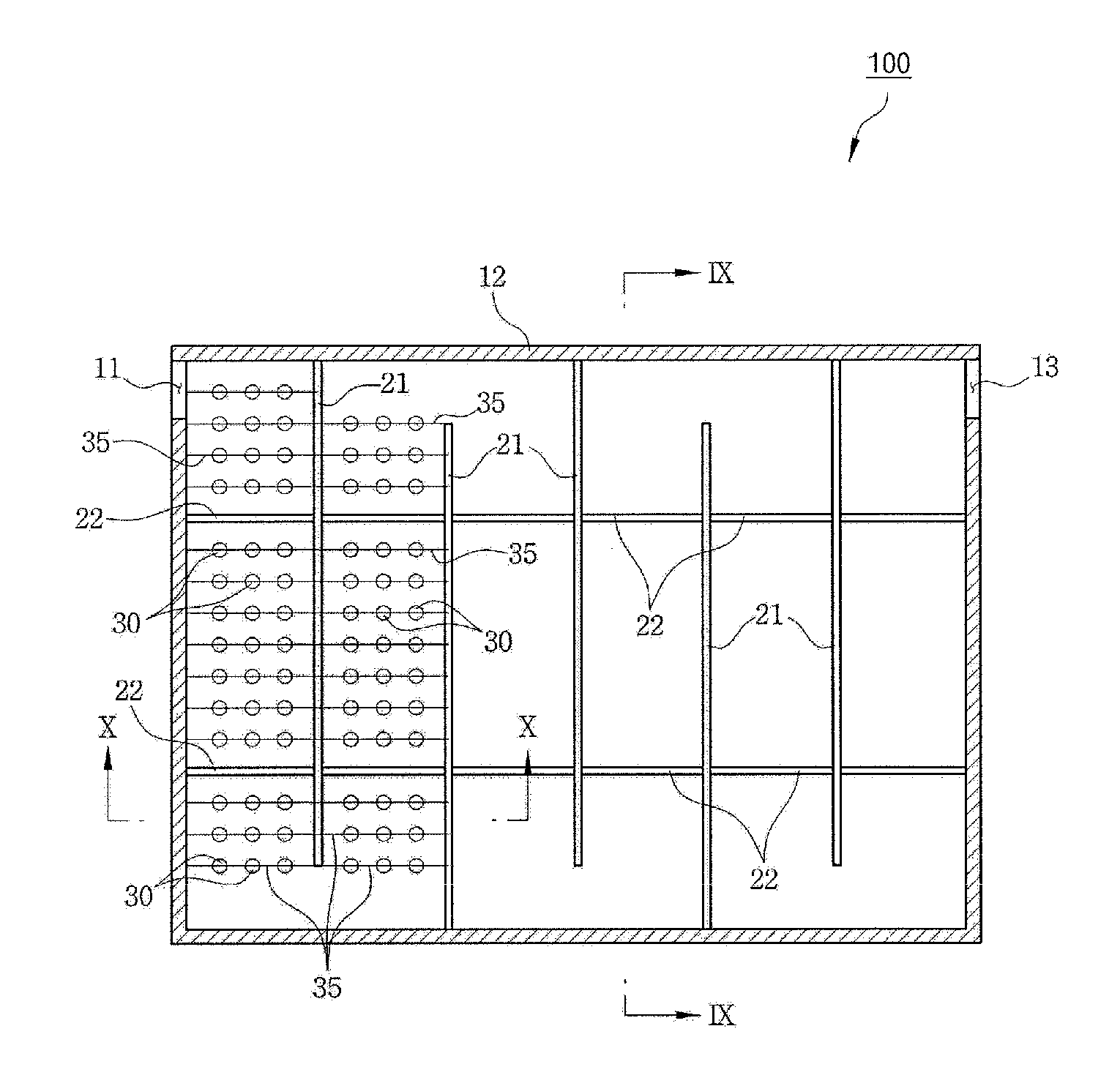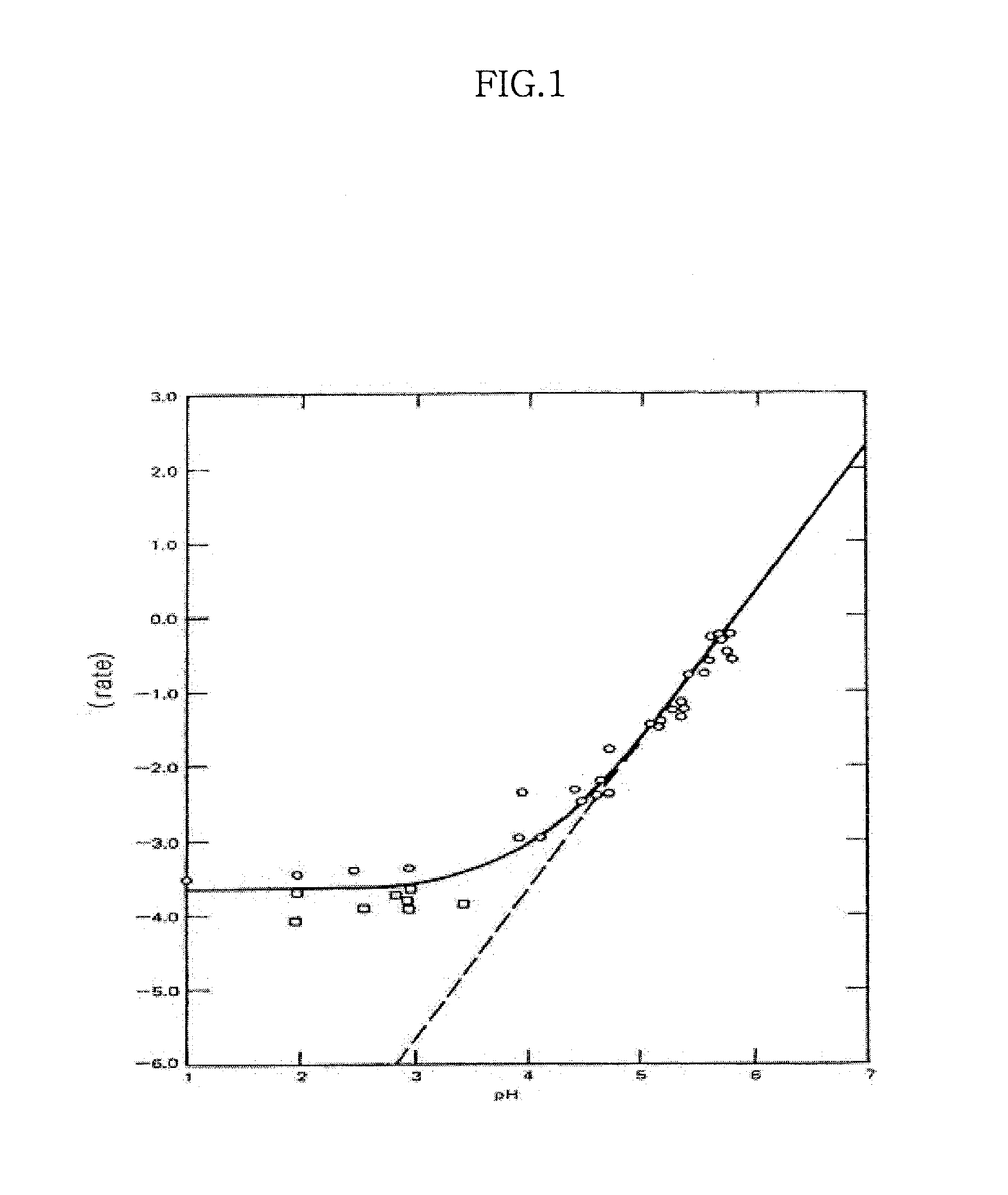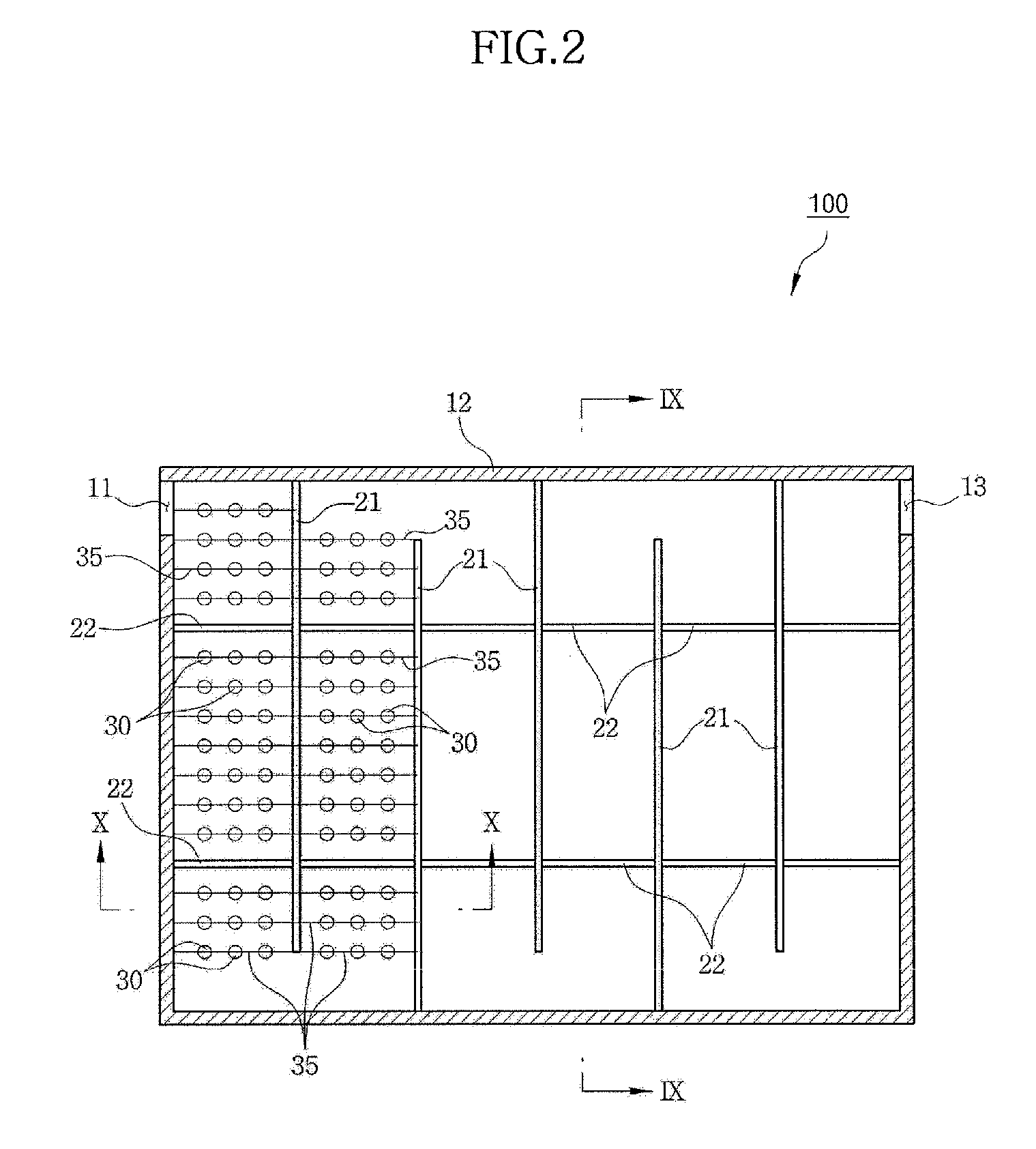Oxidation pond including baffles for treating acid mine drainage
- Summary
- Abstract
- Description
- Claims
- Application Information
AI Technical Summary
Benefits of technology
Problems solved by technology
Method used
Image
Examples
first embodiment
[0050]FIG. 2 is a schematic plan view of an oxidation pond for treating mine drainage according to the present invention; FIG. 3 is a schematic cross-sectional view taken along line III-III of FIG. 2; and FIG. 4 is a schematic cross-sectional view taken along line IV-IV of FIG. 2.
[0051]Referring to FIGS. 2 to 4, the oxidation pond for treating mine drainage is a kind of retention pond which is disposed adjacent to an abandoned mine or the like to temporarily receive mine drainage from the abandoned mine while precipitating iron from the mine drainage. Accordingly, an oxidation pond 100 according to the present invention comprises: an inlet 11 into which mine drainage flows; a retention pond 12 in which the mine drainage resides; and an outlet 13 through which the mine drainage is discharged.
[0052]A naturally formed pond is generally used as the retention pond, but a pond formed by forming outer walls in consideration of geographical conditions may also be used as the retention pond....
second embodiment
[0098]Specifically, referring to FIG. 5, the neutralizing agent 40 used in the second embodiment is prepared by grinding limestone to form fine powers 41 and forming the fine powders into a mass using a binder 42. As the binder 42, a material that can be dissolved in mine drainage at a constant rate with the passage of time is selected. For example, the material can be polyethylene-vinylacetate (EVA), hydrogel, cellulose acetate silicone rubber, polyurethane and silicone matrix that are also used as a release control agent (RCA) of drug delivery system (DDS). Because the binder 42 is dissolved at a constant rate, the neutralizing agent 40 is not coated with iron hydroxide, and the limestone fine powders 41 are released into mine drainage by the dissolution of the binder 42, wherein the fine powders have a significantly large surface area compared to a limestone mass having the same volume, and thus can rapidly increase the pH of mine drainage.
[0099]Namely, as shown by the dotted lin...
third embodiment
[0100]Also, referring to FIG. 6, the neutralizing agent 50 used in the third embodiment is prepared by pressing a limestone mass to form fine cracks 51. More specifically, the limestone mass is pressed with a three-axial (X-axis, Y-axis and Z-axis) compressor to form cracks. If the limestone having fine cracks 51 is suspended in the retention pond 12, mine drainage will be introduced into the fine cracks 51 so that small limestone pieces will be separated. This can solve the problem in which iron hydroxide is coated on the surface of the limestone, and the fine limestone pieces can be introduced into mine drainage while they can effectively increase the pH of the mine drainage.
[0101]Also, the limestone neutralizing agents 30, 40 and 50 used in the first to third embodiments are disposed close to the inlet 11 in the retention pond 12. The portion close to the inlet 11 has a relatively fast flow rate, so that the neutralizing agent is prevented from being coated with iron hydroxide. M...
PUM
 Login to View More
Login to View More Abstract
Description
Claims
Application Information
 Login to View More
Login to View More - R&D
- Intellectual Property
- Life Sciences
- Materials
- Tech Scout
- Unparalleled Data Quality
- Higher Quality Content
- 60% Fewer Hallucinations
Browse by: Latest US Patents, China's latest patents, Technical Efficacy Thesaurus, Application Domain, Technology Topic, Popular Technical Reports.
© 2025 PatSnap. All rights reserved.Legal|Privacy policy|Modern Slavery Act Transparency Statement|Sitemap|About US| Contact US: help@patsnap.com



